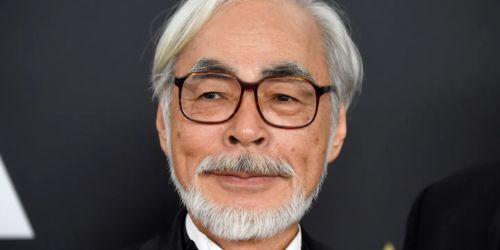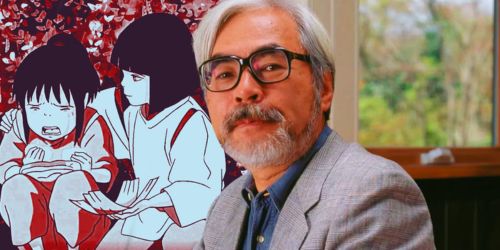Studio Ghibli art is more than just animation—it is a masterpiece in every frame. Founded by Hayao Miyazaki, Isao Takahata, and Toshio Suzuki, Studio Ghibli has created some of the most breathtaking animated films in history. From hand-drawn backgrounds to expressive character designs, every detail in Ghibli’s art style is crafted with love and dedication.
But what makes Studio Ghibli art so special? Why do people around the world admire its visuals? In this blog, we will explore the magic behind every frame, focusing on the unique art style, the techniques used, and how Hayao Miyazaki ensures that every scene tells a story.
The Unique Art Style of Studio Ghibli Art
1. Hand-Drawn Perfection
One of the main reasons Studio Ghibli stands out is its hand-drawn animation. While many studios have shifted to CGI, Ghibli continues to rely on traditional hand-drawn techniques. This gives the films a warm, organic feel that connects deeply with the audience.
2. Attention to Detail
Every frame in a Ghibli movie is carefully designed. From the lush green forests in My Neighbor Totoro to the intricate bathhouse in Spirited Away, every scene looks like a painting. The backgrounds are rich with tiny details that make the world feel alive.
3. Soft and Dreamy Colors
The color palette in Studio Ghibli art is soft, vibrant, and well-balanced. Instead of using harsh contrasts, Ghibli films use gentle, natural tones that create a dreamlike atmosphere. This helps immerse the audience in the world of the film.
4. Expressive Characters
Ghibli characters are designed with emotional depth. Their facial expressions, body language, and small movements make them feel real and relatable. Whether it’s Chihiro’s curiosity in Spirited Away or Howl’s charm in Howl’s Moving Castle, every character is brought to life with thoughtful animation.
How Hayao Miyazaki Shapes Studio Ghibli Art
1. His Passion for Hand-Drawn Animation
Hayao Miyazaki believes that animation should be handcrafted with love. He often spends hours redrawing scenes to ensure they capture the right emotions. His dedication to traditional animation has kept Studio Ghibli art unique in a world dominated by digital effects.
2. Bringing Nature to Life
Miyazaki has a deep love for nature, and it shows in Studio Ghibli art. His films often feature detailed landscapes, flowing rivers, and gentle breezes that make the world feel magical. The wind moving through the grass in Princess Mononoke or the sunlight reflecting off the water in Ponyo are perfect examples of his artistic genius.
3. The Art of Everyday Life
One of the most special things about Studio Ghibli art is how it makes ordinary moments feel extraordinary. Whether it’s cooking a meal, opening a window, or walking through a field, Miyazaki’s animation gives life to simple things. This attention to daily life makes Ghibli films feel warm and relatable.
The Role of Background Art in Studio Ghibli Art Films
1. Creating a Living World
Backgrounds in Ghibli films are not just backdrops—they tell a story. Every tree, building, and cloud has been carefully designed to make the world feel real. This is why fans can watch a Ghibli film multiple times and always discover new details.
2. Blending Fantasy with Reality
Ghibli films often mix real-world locations with fantasy elements. For example, in Howl’s Moving Castle, the landscapes are inspired by the European countryside, but the moving castle itself is pure fantasy. This blend of real and magical elements is a signature of Studio Ghibli art.
3. The Influence of Japanese Culture
Many Studio Ghibli films reflect traditional Japanese architecture, gardens, and cityscapes. Whether it’s the quiet rural town in Whisper of the Heart or the busy streets in Spirited Away, the backgrounds capture the beauty of Japan’s culture and history.
How Studio Ghibli Art Stands Out from Other Animation Studios
1. Minimal Use of CGI
Unlike many modern animation studios, Studio Ghibli avoids using CGI for character animation. While some CGI is used for certain effects (such as water in Ponyo), most of the animation remains hand-drawn, preserving its classic and timeless look.
2. Focus on Atmosphere and Mood
Instead of relying on fast-paced action, Studio Ghibli art focuses on atmosphere and mood. The use of soft lighting, slow camera movements, and detailed backgrounds creates a sense of peace and wonder.
3. Strong Emotional Connection
Ghibli films are not just visually stunning; they are emotionally powerful. The art, music, and storytelling work together to create deep emotional moments. Whether it’s the warmth of a sunset in The Wind Rises or the loneliness in Grave of the Fireflies, every frame carries meaning.
The Future of Studio Ghibli Art
1. Keeping Traditional Animation Alive with the use of Studio Ghibli
With the rise of CGI and AI in animation, traditional hand-drawn art is becoming rare. However, Studio Ghibli continues to keep this art form alive.
2. The Boy and the Heron: A New Chapter
The studio’s latest film, The Boy and the Heron, continues to showcase the timeless beauty of hand-drawn animation. It proves that even in the digital age, there is still a place for Studio Ghibli art.
3. Inspiring Future Artists
Many young animators look up to Hayao Miyazaki and Studio Ghibli. Their dedication to traditional animation and artistic storytelling continues to inspire a new generation of artists.
Conclusion
Studio Ghibli art is a celebration of creativity, craftsmanship, and storytelling. Every frame is a work of art, filled with emotion, beauty, and life. Thanks to Hayao Miyazaki’s dedication, the magic of hand-drawn animation continues to enchant audiences worldwide.
As technology changes, will traditional animation survive? One thing is certain—Studio Ghibli’s art will remain timeless, inspiring generations to come.
For more information visit our website KalaSpot.com






